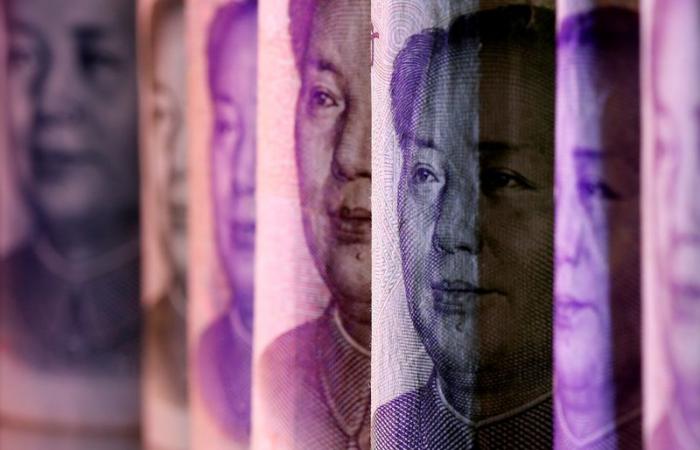Mike Dolan provides an update on the day ahead in the US and global markets.
Speculation that United States President-elect Donald Trump would take a “soft, gentle” approach to his trade and economic policies was shaken overnight when he announced an immediate increase in tariffs on Canada, Mexico and China, which had an impact on the currencies of these three countries.
Mr. Trump, who takes office on January 20, said he would impose 25% tariffs on imports from Canada and Mexico on day one until those countries crack down on drugs. , particularly fentanyl, and undocumented migrants crossing the border. This measure appears to violate the free trade agreement he negotiated with these two countries during his first term in the White House.
Mr. Trump also separately discussed “an additional 10 percent tariff, in addition to any additional tariffs” on imports from China.
What this measure means for China is not entirely clear, as Mr. Trump has already pledged to end China’s most favored nation status and impose tariffs of more than 60 % on Chinese imports, much higher duties than those imposed during his first term.
Foreign exchange markets have quickly adjusted to try to take into account the risk of these measures in less than two months.
The U.S. dollar jumped more than 1% to its highest level in four and a half years against its Canadian counterpart and more than 2% against the Mexican peso. The greenback also reached its highest level since July 30 against the Chinese yuan
Together, the peso, Canadian dollar and yuan make up more than 40% of the Federal Reserve’s trade-weighted “broad” basket of currencies.
The Chinese embassy in Washington responded to Mr Trump’s comments by saying neither country would win a trade war.
Other currencies also fell against the greenback, but the movements had eased at the start of trading in Europe.
The fact that Mr. Trump has not yet mentioned Europe or Japan as part of his “day one” plan has allowed the euro, which hit a two-year low on Friday, to maintain its rebound on Monday and the yen also held up.
European Central Bank policy chief Mario Centeno has warned that the eurozone must be vigilant to avoid inflation falling below the ECB’s 2% target, amid growing economic risks such as that the likely new US customs duties, which are “not good news for Europe”.
TREASURE TRANSITION
Trump’s barrage of policy promises on his social media account late Monday came just as investors had rejoiced over the nomination of Wall Street fund manager Scott Bessent as Treasury secretary, hoping that he exercises influence on the administration thanks to his knowledge of the markets and that he is potentially a voice of moderation.
News of Mr. Bessent’s appointment broke late Friday and U.S. Treasury bonds rallied sharply in response, with 10-year and 30-year yields falling 10 to 20 basis points to return to levels before the election.
The decline in Treasury yields was helped by a further fall in crude oil prices and inflation expectations, following reports that Israel appears ready to approve a US plan for a cease-fire with Lebanese Hezbollah on Tuesday.
The fall in U.S. crude prices below $70 a barrel was also helped by reports that Mr. Trump’s transition team is planning an energy program that would approve export permits for new gas projects liquefied natural gas and would increase oil drilling off U.S. coasts and on federal lands.
Falling Treasury yields took the dollar to a two-year high on Monday, at least until tariffs shook things up again today.
Helped by the calm in Treasuries, Wall Street stock indexes rose again on Monday, with the Dow Jones index hitting a new record and the small-cap Russell 2000 index also outperforming and reaching a historical record.
With another busy schedule of Treasury auctions underway in a holiday-shortened week, speculation over the direction of the new administration is sidelining more regular economic monitoring for now.
The Fed is due to release the minutes of its last monetary policy meeting, in which it lowered key interest rates again, just two days after the election.
Before that, the Conference Board will also release its latest consumer confidence survey, another key test of how households are reacting to the election outcome.
Key developments expected to provide more guidance to U.S. markets later on Tuesday:
*US consumer confidence in November, new home sales in October, Richmond Federal Reserve business survey in November, Dallas Fed survey of the services sector in November, housing prices in September.
* The Federal Open Market Committee publishes the minutes of its last meeting.
* The Governor of the European Central Bank and the Bank of Portugal, Mario Centeno, and the Governor of the European Central Bank and the Bank of Finland, Olli Rehn, will speak.
* Results from US companies: Dell, Analog Devices, CrowdStrike, HP, Autodesk, Workday, Best Buy, JM Smucker, Abercrombie & Fitch
* The US Treasury is selling $70 billion in 5-year bonds and $48 billion in 2-year floating rate bonds.






